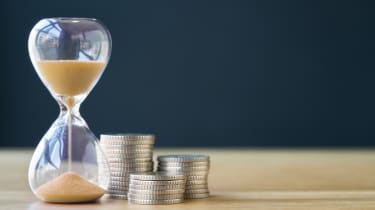If you are furious –or just frustrated –with the inflation readings, the price of fuel and the daily trading drama on Wall Street, remember that we have seen this trouble before, survived and recovered.
Surely you know the proverb that bad news can be good news for financial markets. If the next recession is not yet official, there are signs it is gathering. But some consequences of a standard economic downturn work to the benefit of fixed-income investors and are tolerable for stock and fund holders who diversify and pursue high dividends. There is no cause to freak out.
Let’s start with bonds. It is generally too late to sell and quite likely worth selective buying. Since the 10-year Treasury yield topped at 3.48% on June 13, it has dropped to roughly 3%, a bond-price rally that is allaying the year-to-date losses in popular funds.
BNY Mellon Municipal bond Infrastructure Fund (DMB, $13), a closed-end fund and a longtime recommendation of Kiplinger’s Investing for Income, bottomed on May 23, down 24% for the year. The fund is now off less than 10% for 2022 as its deep discount to net asset value has reverted to a premium. The 5% yield should be the equivalent of 7% or more if you are in a high tax bracket. The duration is moderate, and most of its bonds are investment grade. (Returns and other data are as of July 8; investments I like are in bold.)
A Fork in the Road for Bond YieldsRemember that everything you see and hear about the Federal Reserve’s interest-rate-raising campaign is tethered to short-term rates. The goal is to fight inflation at the cost of an economic slowdown, which means long-term bond yields, including mortgage rates, are intended to level off or fall. Indeed, long Treasury and investment-grade corporate rates could fall harder once the bond world sees a two-month easing of the inflation readings, which would extend this bond rally.
“The antidote to all this pessimism is a change in the inflation outlook,” says Ken Leech, chief investment officer for Western Asset Management. Leech loves that gasoline futures are plunging, as are the prices of fertilizer, lumber and more. The Bloomberg Commodity Index is down 15% from early June. That bolsters the dollar, which in turn is disinflationary. The Invesco Dollar-Bullish ETF (UUP, $29) is up 11.5% for 2022.
Turning to stocks, the Dow industrials and the S&P 500 will stay susceptible to news-driven 2% daily swings. But there is a convincing argument for dividend-payers. So far this year, for example, the surprise ace among all blue-chip mutual funds is Federated Hermes Strategic Value Dividend (SVAAX), with a 5% gain. (You can buy the fund with no sales charge at major online brokerage platforms.) Lest you confuse this with an oil fund, its 16.5% energy weighting trails stakes in healthcare and utilities. Returns lag sis-boom-bah bull markets, but the fund is rapidly closing its long-term total-return gap with the struggling Vanguard and Franklin dividend-growth funds. Plus, the Federated fund yields 3.9%.
I know the public is edgy that inflation will stay high. But what seems like bad economic news can be a balm for your portfolio. The rest of 2022 will be better than the first half for many investments, even if recession clouds close in sooner rather than later.
